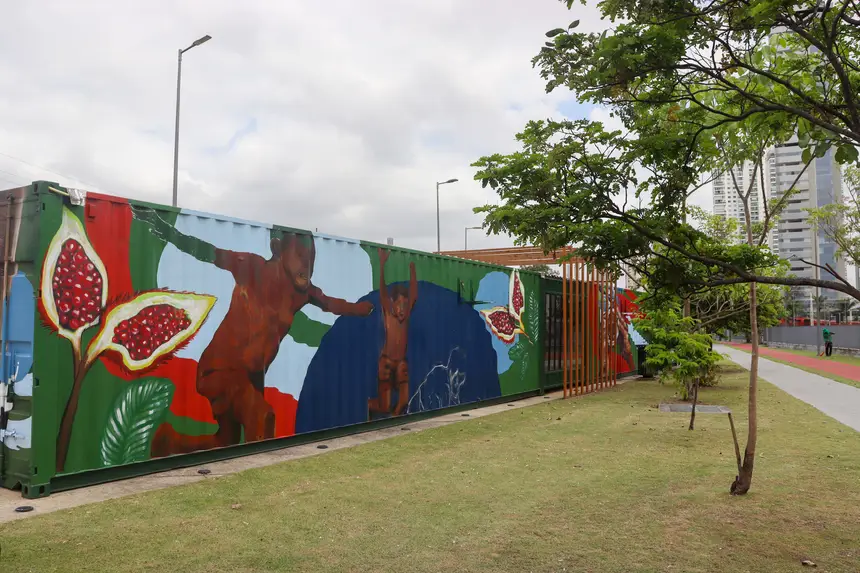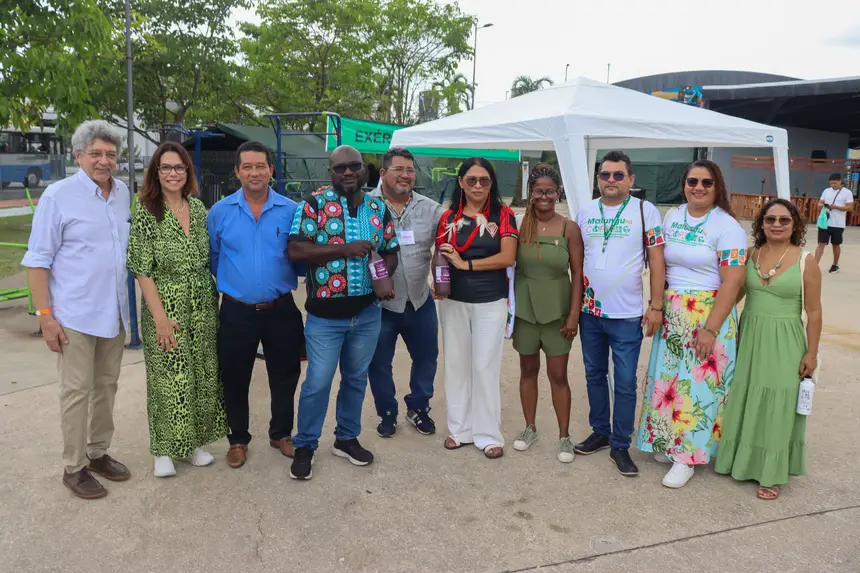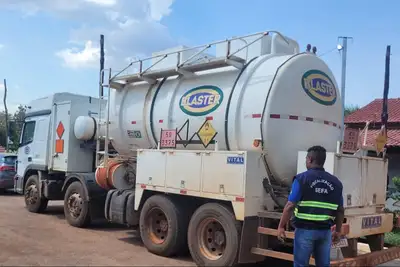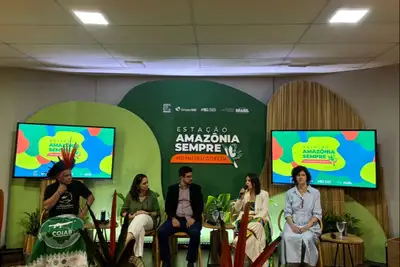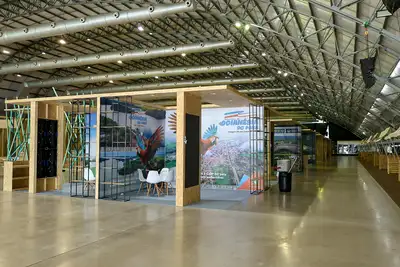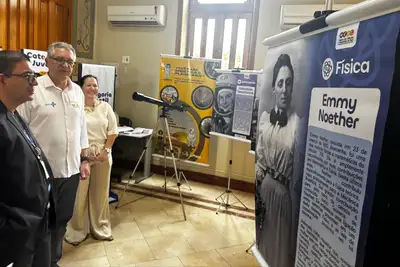People of the Forest: Pará delivers space that celebrates Amazonian identities
Located in Porto Futuro I, the container created by the Secretary of Environment, Climate and Sustainability (SEMAS) values indigenous peoples, quilombolas, and extractivists, reinforcing the appreciation of traditional knowledge in the bioeconomy agenda.
The Government of Pará delivered the People of the Forest Space, at Porto Futuro I, in Belém. Created by the Secretary of Environment, Climate and Sustainability (Semas) and installed in an area managed by the Secretary of Tourism (Setur), the new container emerges as a permanent visibility point for indigenous peoples, quilombolas, and extractivists, bringing together art, identity, and sociocultural production in the Amazon. The delivery occurs amid the agendas of COP30 and reinforces the presence of forest peoples in the State's climate and bioeconomic agenda.
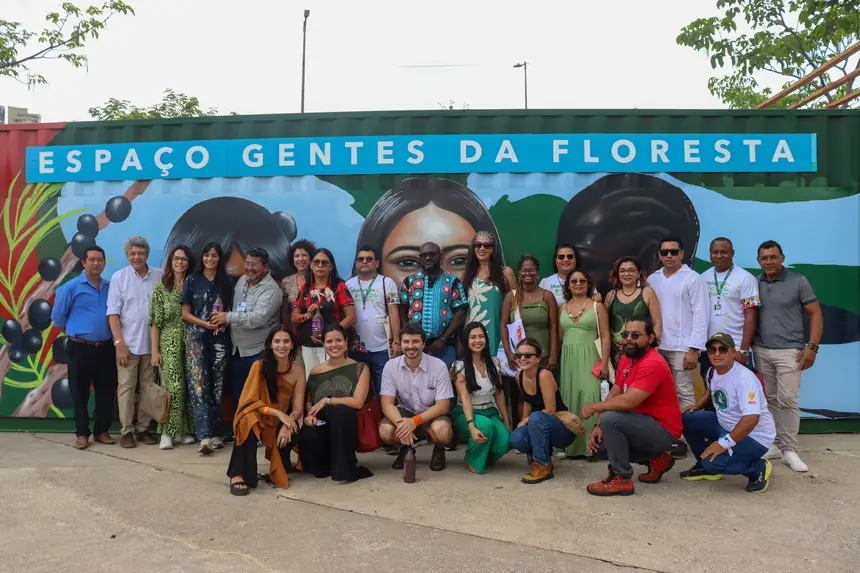
Pedro Leitao, one of the project implementers, highlighted: “We worked on the idea of the Sociobio House, where the networks expressed several times that they would like to have a support point in Belém, to have a showcase, to have a place where they could display their culture, showcase their products, talk about the importance it has for the bioeconomy, for Sociobioeconomy. So we are here today with Camille Bemerguy, who is the deputy secretary of Bioeconomy at SEMAS, responsible for bioeconomy, and with the three networks, Indigenous Peoples, Quilombolas, Extractivists. The idea is to present the container that has been renovated, but that is being delivered with the promise that it will be activated post-COP.”
A space that is born to celebrate
Idealized and created through public-private partnerships, the People of the Forest Space celebrates and thanks the technical partners from Germany GIZ (Deutsche Gesellschaft für Internationale Zusammenarbeit) and KFW (Kreditanstalt für Wiederaufbau), as well as the British UK Pact. The People of the Forest Space was generated to be occupied by the peoples, persons, and folks of the forest. Bringing to Belém the knowledge, cultures, customs, and roots of traditional indigenous, quilombola, and extractivist communities. They were represented by leaders such as Concita Sompré, president of the Federation of Indigenous Peoples of Pará (FEPIPA), Mauro Santos, from the quilombola territory of Mocambo, in Ourém, and José Ivanildo Brilhante, specialist in Agroextractivist Systems in Common Use Territory in the Amazon and Master in Family Agriculture and Sustainable Development.
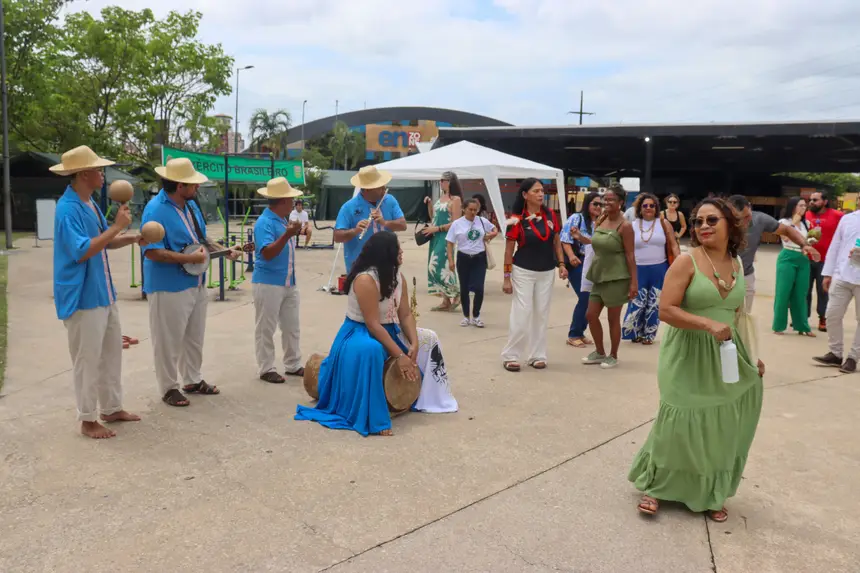
The deputy secretary of Bioeconomy, Camille Bemerguy, emphasized that the launch symbolizes an important beginning for the agenda of valuing traditional populations in Pará. “Today we have to celebrate beginnings because they say that the seed of the beginning contains the tree. So, this is the moment. From now on, we will think about how we will activate this powerfully. But at this moment, I think what I wanted was really to celebrate, to have a space that celebrates this well-being, this ancestry in its different characteristics,” she stated.
For her, the space also plays an essential role in gaining visibility: “Since the construction of the Bioeconomy Plan (PlanBio), we have heard the request to leave the place where we are not seen, people do not listen to us, we are not part of the constructions. So, it started there and this space is representative for that. The container is another step on this path.”
Recognition of the forest peoples
The president of the Federation of Indigenous Peoples of Pará (FEPIPA), Concita Sompré, reinforced that the space represents more than a point of exhibition: it is a gesture of recognition.
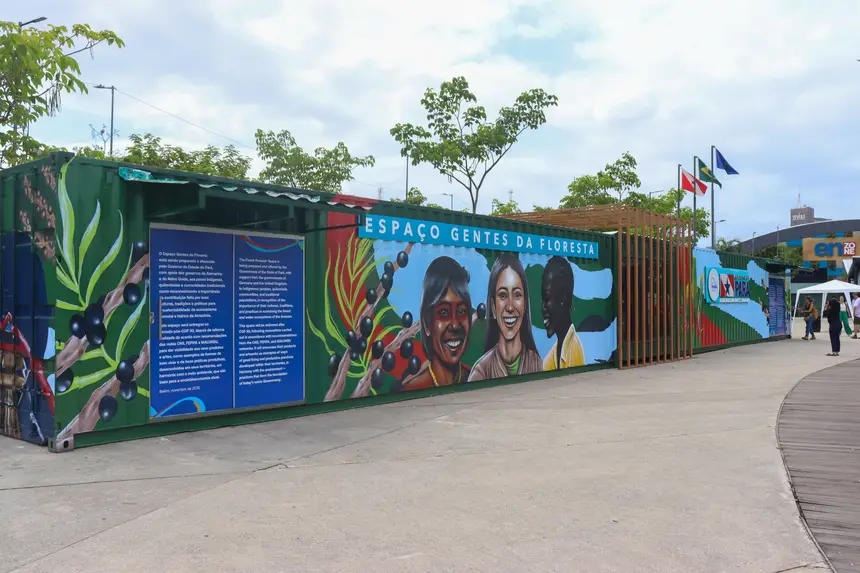
“It is in this space that we hope to have recognition of our demands, our rights, and the policies that still need to advance. The music we hear here connects us, elevates us. We are grateful for this space,” she declared.
The quilombola Mauro Santos, from the Mocambo territory in Ourém, celebrated the fact that the State Government listened to the demands of traditional peoples.
“When the State listens to the movement, this becomes possible. This container will be a showcase for those who pass by to understand what we produce in quilombola, extractivist, and indigenous territories,” he stated.
He emphasized that the space will help to publicize products and strengthen socioprodutive networks: “May this be an open door to show our beauties, our carimbó, our living writing of the forest.”
Visibility and belonging
The People of the Forest Space integrates effective actions of Pará around the themes defended at COP30, reinforcing the presence and protagonism of forest peoples in the climate and bioeconomy agenda. The initiative will allow gathering art, identity, production, and memory, functioning as a showcase, meeting point, and platform for strengthening the three bioeconomy networks.
“The Amazon is part of the ancestral knowledge of community science and the experience of its own. I am very happy. There is space for everyone, to see the collective community protagonism of the Amazon being exposed where before they did not give us a voice, did not look at us, did not want us. Today is a day to celebrate the peoples, persons, and folks of the forest,” emphasized José Ivanildo Brilhante.
Graphics that connect
The complex of containers of the “People of the Forest” space was carefully styled by the Pará visual artist Mama Quilla. Addressing Amazonian elements, Pará elements, and reinforcing the Amazonian traits in the human representation of her panel, Mama Quilla translated the roots of the forest people in her art.
“It was a great challenge, for me and my team, to work on this piece, with our Amazonian heat and rain. It was an opportunity to show and art also moves the economy, especially in such an important space for our people,” thanked Mama Quilla.
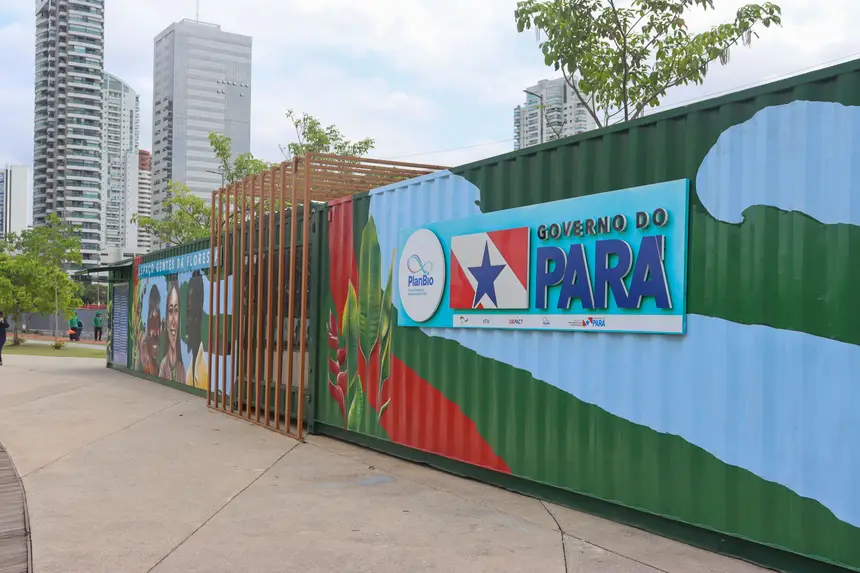
The space will now be part of the cultural and tourist circuit of Porto Futuro I and will be used for exhibitions, presentations, conversation circles, and actions to promote the production of the territories.
Text by Lucas Maciel – ASCOM SEMAS



